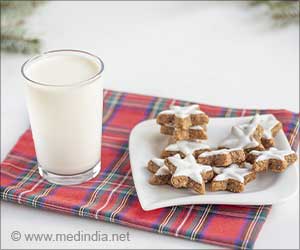“Combining Pepsi and milk has long been a secret hack among Pepsi fans,” said Todd Kaplan, Pepsi’s chief marketing officer, in a media release announcing the campaign. But experts say Pepsi and these fans are not and never were reinventing the wheel. The combination is not novel it’s been around for years at this point. Various countries have numerous versions of this combination like the Punjab province of Pakistan where it is commonly consumed, and is called doodh soda or pakola doodh which translates to carbonated milk. It is also popular among Morman communities where the concept of combining milk and soda, or ‘dirty soda,’ has been popular among for several years. This population typically abstains from alcohol and hot beverages.
The term is relative and it might be difficult to come up with precise numbers. The nutrient content is difficult to quantify because it is dependent on a few key factors. First and foremost, the type of milk is important. Although all dairy milk have a similar protein content, the fat content and thus the calorie content vary. Second, the ratio is important.
If someone is using a 12 oz. can of Pepsi and a 8 oz. of whole milk, this drink would have 296 calories and 53 grams of sugar. Pepsi contains 150 calories and 41 grams of sugar, all added sugar. Milk has 146 calories and 12 grams of sugar, none of which are added. The amount of calories is equivalent to a snack without providing a significant source of nutrients from the soda itself. One cup of whole cow’s milk also has 8 grams of protein and 28 percent of your daily calcium needs, essential for muscle and bone health.
Does Adding Milk to Pepsi make it Healthier?
While dairy milk is a nutrient-dense option, providing 13 essential vitamins and minerals along with protein, it’s offset at least to some degree by diluting it with the addition of Pepsi. The most significant impact comes from sugar.
Advertisement
The Dietary Guidelines for Americans 2020-2025 recommends that people ages 2 and older keep their intake of added sugars to less than 10% of their caloric consumption. Therefore, person consuming 2,000 calories per day should limit their added sugar intake to 200 calories from added sugar, which is about 12 teaspoons or 50 grams. Pilk has 41 grams of added sugar (1✔ ✔Trusted Source
Get the Facts: Added Sugars
Go to source
).Affect of Pilk on Health
As with all things, common recommendation is to indulge with moderation, get a chance to try everything in small amounts. The issue is with the consumption of Pilk with cookies, which will only add to the sugar content. Experts don’t recommend considering Pilk a nutritious source of vitamins and nutrients. While there is nothing inherently wrong with drinking soda or consuming dairy, there is no compelling reason to do so. When it comes to soda, the scientific community agrees that the more soda – and even diet soda – one consumes, the greater one’s risk for a variety of chronic diseases, including obesity.
Several studies over the years have raised alarms about sugary beverage consumption. A study of of more than 37,000 men and nearly 80,700 women indicated that long-term sugary beverage consumption was associated with a higher risk of death from cardiovascular disease and cancer (2✔ ✔Trusted Source
Long-Term Consumption of Sugar-Sweetened and Artificially Sweetened Beverages and Risk of Mortality in US Adults
Go to source).
Another study of more than 450,000 people from 10 European countries indicated that consuming total, sugar-sweetened, and artificially-sweetened soft drinks were linked with a higher chance of all-cause mortality (3✔ ✔Trusted Source
Association Between Soft Drink Consumption and Mortality in 10 European Countries
Go to source).
Individuals with diabetes and lactose intolerances should be particularly careful. Having diabetes doesn’t mean someone can’t eat or drink carbs – they just need to monitor for blood sugar changes and adjust insulin or medication accordingly. For people with lactose intolerance, some milk options like Lactaid or A2 milk, which is milk made from cows who produce only the A2 protein, can soften the uncomfortable stomach symptoms they’ll likely experience.
While Pilk might be a fleeting trend, it is important to keep in mind how this fits in one’s diet and whether it is worth a shot or not.
References :
- Get the Facts: Added Sugars – (https://www.cdc.gov/nutrition/data-statistics/added-sugars.html)
- Long-Term Consumption of Sugar-Sweetened and Artificially Sweetened Beverages and Risk of Mortality in US Adults – (https://pubmed.ncbi.nlm.nih.gov/30882235/)
- Association Between Soft Drink Consumption and Mortality in 10 European Countries – (https://pubmed.ncbi.nlm.nih.gov/31479109/)
Source: Medindia



